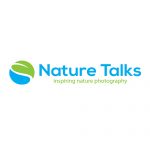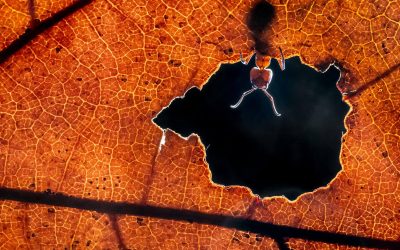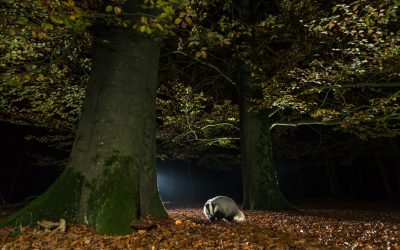Does growing up in one of the Baltic States influence the work of a wildlife photographer?
To answer to this question I talked to the Estonian nature photographer Aare Udras. Aare was a runner-up in the categorie Mammals in the NPOTY contest 2021. For Aare the main reason to explore the Estonian forests is to try to understand a bit of nature and to study the behavior of the animals that live there. And during this process of studying, sometimes a reward in the form of a photo awaits. It is time to get to know this nature explorer. For him, the exploration process is even more important than taking the actual photo.
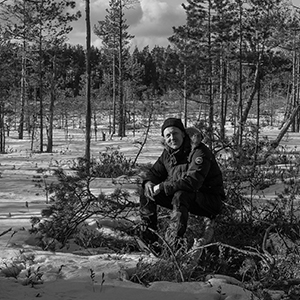
Aare Udras grew up in a small town in Estonia. His family often visited relatives outside the city and at that time, people in Estonia were still keeping animals and harvesting food from their fields. For Aare, these family visits provided an opportunity to discover nature. He remembers trying to get close to the cranes that gathered in the nearby fields. Or how surprised he was that it took three people to embrace the ancient trees in the primeval forest. From an early age, he was not afraid to get lost. In those days there were no cell phones, all he needed on his explorations was a good will and sometimes a torch.
Aare Udras got his first camera around the age of ten. It was a film camera, black and white films. At the time it was both difficult and yet expensive to get the chemicals to develop the film and photos. Plus, every time he developed photos, he kept the bathroom occupied for darkroom for days, which his family was not impressed with. About twelve years ago, Aare Udras got his first digital camera, which made things a bit easier.
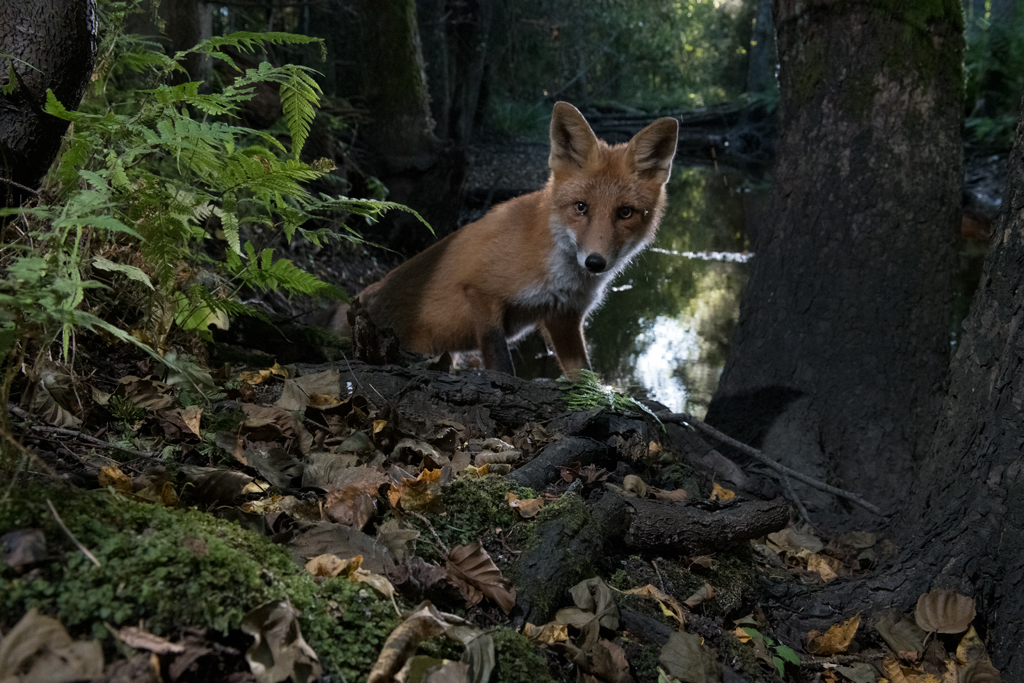
Red fox (Vulpes vulpes), Aare Udras
Inspiration
“Studying wildlife was and still is very inspiring to me. Learning about the wildlife in my neighborhood has always interested me. For many people, life just outside the home door is less interesting than life in Africa, Alaska etc. I think otherwise. There is so much to learn about the nature in your own neighborhood. And when you go outside more often at home, you will start to see and notice more, you will start to see the changes, pay more attention to the small things and maybe start to see the connections between them. In time, all the small notices will come together, into a certain context. You will start to see things little differently, you start to care about it and you will no longer be just passing by like a stranger anymore.
As all of it is my hobby, I do not have much time for that. So, usually I do get some idea of some species I want to get to know a little. I do read and learn about them, trying to get this information connected with my experiences and things I have noticed outdoors. Sometimes it helps to get a little understanding of possible reasons for behaviour, for example. At least I try to get some understanding.

Western Capercaillie (Tetrao urogallus), Aare Udras
There is a lot to discover. There are many inspiring persons as well. Like, for example, Vadim Sidorovich. He is a professor, still active in the field, wandering, studying and exploring in the forests of Naliboki. At the moment, he and his team are specialized in the life of the Eurasian Lynx and the Grey Wolf. They take great interest in the encounters between these two species in Belarus. Something that has been hardly studied before. It gives a wonderful insight to the influence these species have on each other, and on the carnivores they share their territory with. They write about their findings in their blogs, which are well worth a read, if you’re interested.
I like to see and capture positive things, that’s why I’m looking for such places and stories. A positive story and one of my current interests is the European mink. The European mink (Mustela lutreola) is one of the critically endangered species worldwide and the most endangered mammal in Europe. The population has collapsed everywhere since the late 19th century and their current number is much less than 3% of the historical numbers. Currently, the main reason for this decline is the impact of the invasive American mink. Minks are normally active from dusk to dawn and inhabit closely shaded rivers, streams and wetlands where they feed on fish, crustaceans, amphibians, small mammals, insects and birds.
But on the plus side, with a huge effort from conservationists over 20 years, a steady island population of this European carnivore has established itself on the island of Hiiumaa (1000 km2) in Estonia. The project started with animals from the breeding of the Tallinn Zoo. The current stable population in Hiiumaa consists of about 100-200 individuals. There are high expectations that a similar translocation project, to be launched in 2022 on Estonia’s largest island (Saaremaa: 2400 km2), will receive all the necessary support and also lead to success. Small populations of European mink can also be found in Spain, Romania, the Kuril Islands and here in Estonia where they were reintroduced. Hopefully my pictures help to show that, in addition to our everyday nature-destroying actions, a number of small positive things take place at the same time. That brings hope!”
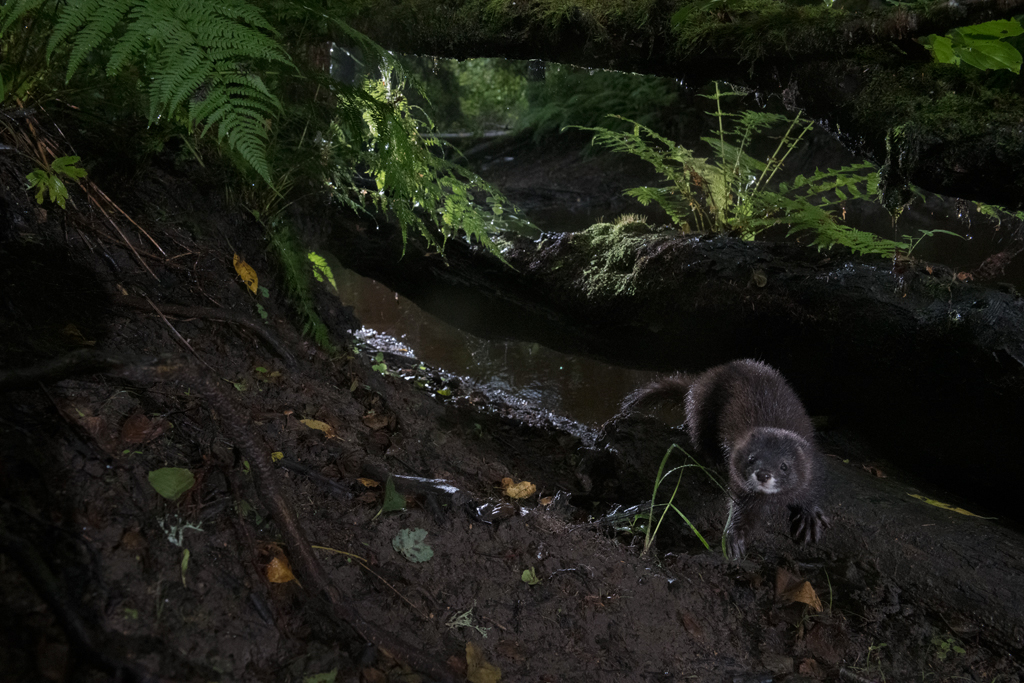
Born in the wild again, European mink (Mustela lutreola), Aare Udras
Inspiring photographers
“In my childhood the Estonian borders were closed, as we were part of the Soviet Union. So it was difficult, if not impossible to receive information from the west. That is why my biggest influencers come from within Estonia.
To start with, I would like to mention Fred Jüssi, an Estonian biologist, nature writer, photographer and a great storyteller. Jüssi has published numerous books, articles and audio recordings related to nature. From 1976 to 1986 he ran the radio program Looduse Aabits, the ABC book of nature.
Secondly I would like to mention Rein Maran, an Estonian cinematographer, director, and professor, famous for his short nature movies of different endangered species. He established the Stodom photo group and later the Tallinn Photo Club and he can be considered one of the founders of the Estonian nature photo contests.
These two guys probably influenced everyone in Estonia during my childhood era.
Nowadays there are a lot of inspiring photographers like Hannu Hautala, an old school Finnish nature man and photographer, Sergey Gorshkov, the man who spent years of studying the Kamchatka bears and made impressive photos of the bears using a wide-angle lens. I think one of the reasons I like photos shot wide, with a 35 millimeter lens, is because of his pictures and of course classic 35 millimeter movie format which is the most pleasant to look at. And, of course, Markus Varesvuo, Vincent Munier, Bence Máté and many more.”
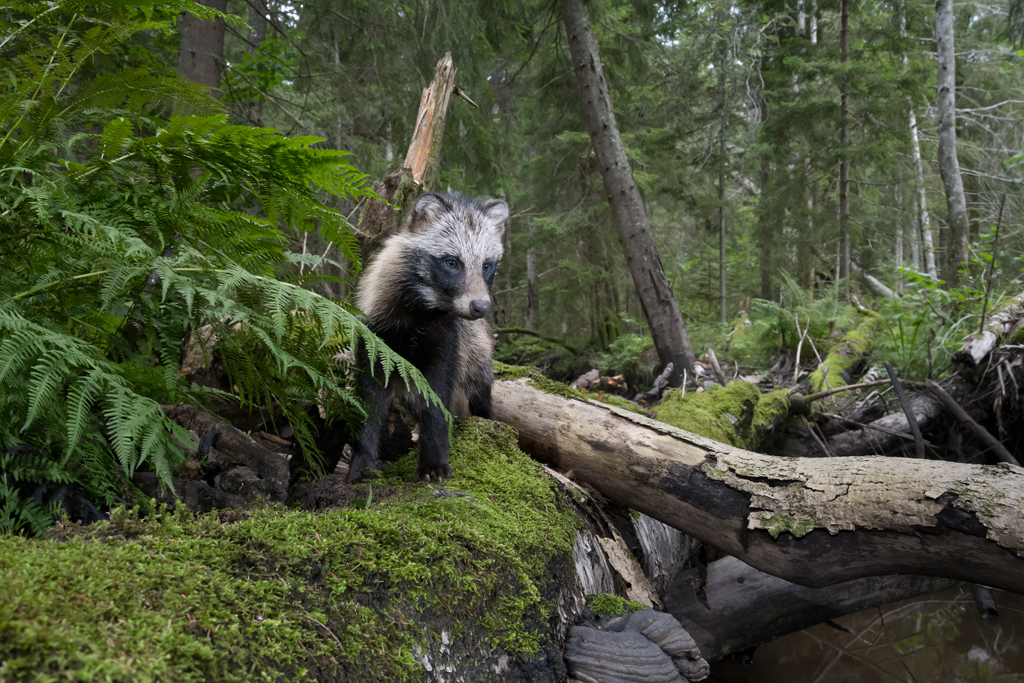
Common Raccoon dog (Nyctereutes procyonoides), Aare Udras
Preparation
“I love to study the lifestyle of animals in their natural environment and under natural conditions. I try to avoid making serious impact on their lives or habitat. That, plus the fact that I can’t spend all the time I want, is why I love working with unattended cameras. I install my cameras and then leave, without disturbing the scene and the wildlife. Every time I go to inspect the cameras, it is a big surprise to see the results. Usually the animal is on the wrong side of the lens, behind the camera rather than in front of it or not in the “correct” pose or position. But that’s all part of the game.
Working with unattended cameras can also be risky. The equipment is expensive, so I try to install them in places with little human activity, and in such a way that they are difficult for people to spot. I also use wildcams to monitor the photo equipment. This is especially important if you work close to the Russian border. You have to keep in mind that their culture differs in some respects. The Russians go out a lot to collect mushrooms and berries in the forest. And for them, the “finders keepers” rule doesn’t just apply to kids. This means that finding an unattended device in the forest “means” it belongs to them. Fortunately, some landowners and friends help me to guard the equipment and keep an eye on the area.
I also have private hide. But hide photography takes time and like I said, I don’t have enough of that. I also prefer to use that little bit of free time to be outside. Because I don’t use bait, the animals don’t show up that often. Regulations prohibit the use of bait, so using bait can result in hefty fines. I’ve tried using roadkill, but in Estonia there is not enough of something like roadkill…usually when a roe deer is run over, it is taken home and ends up as food on the table.”
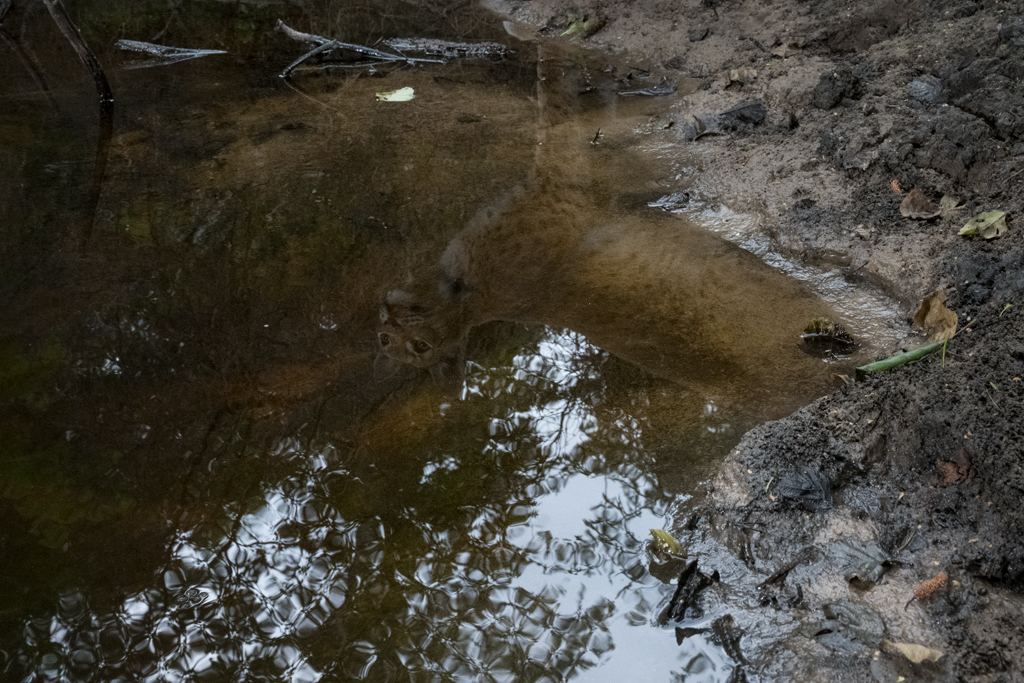
Eurasian Lynx in mirror (Lynx lynx), Aare Udras
Signature
“I honestly don’t consider myself as a ‘real’ nature photographer. I think there is a big difference between me and real nature photographers. For me a good nature photographer can make a nice photo out of everything. But I can’t, so I am not.
Of course I also try to take nice pictures, but that usually doesn’t work. For me, the steps, the process, to get to the point where the photo is taken is more interesting. Finding the animals, getting to know their routes and habitat, getting them used to the equipment, and hopefully getting the equipment in the right position…. I see it as playing with animals a bit. And on top of that you try to ensure a nice composition. All this together is very challenging, especially when you consider that the camera also has to ‘wake up’ when an animal shows up. For example, the wolf photo that finished second in the NPOTY 2021 contest. Wolves are very hard to get on camera. They are very smart and sense when something is wrong. That plastic photo gear thing tied to a tree, disrupts their world, no matter how you install it. They feel the change you’ve made so you have to outsmart them every time or just be lucky or both. Knowing that the outcome is anything but predictable, I inspect the outcome with an open mind. Therefore I go by the rule that what the forest gives, is what you get. There is no need to push!”
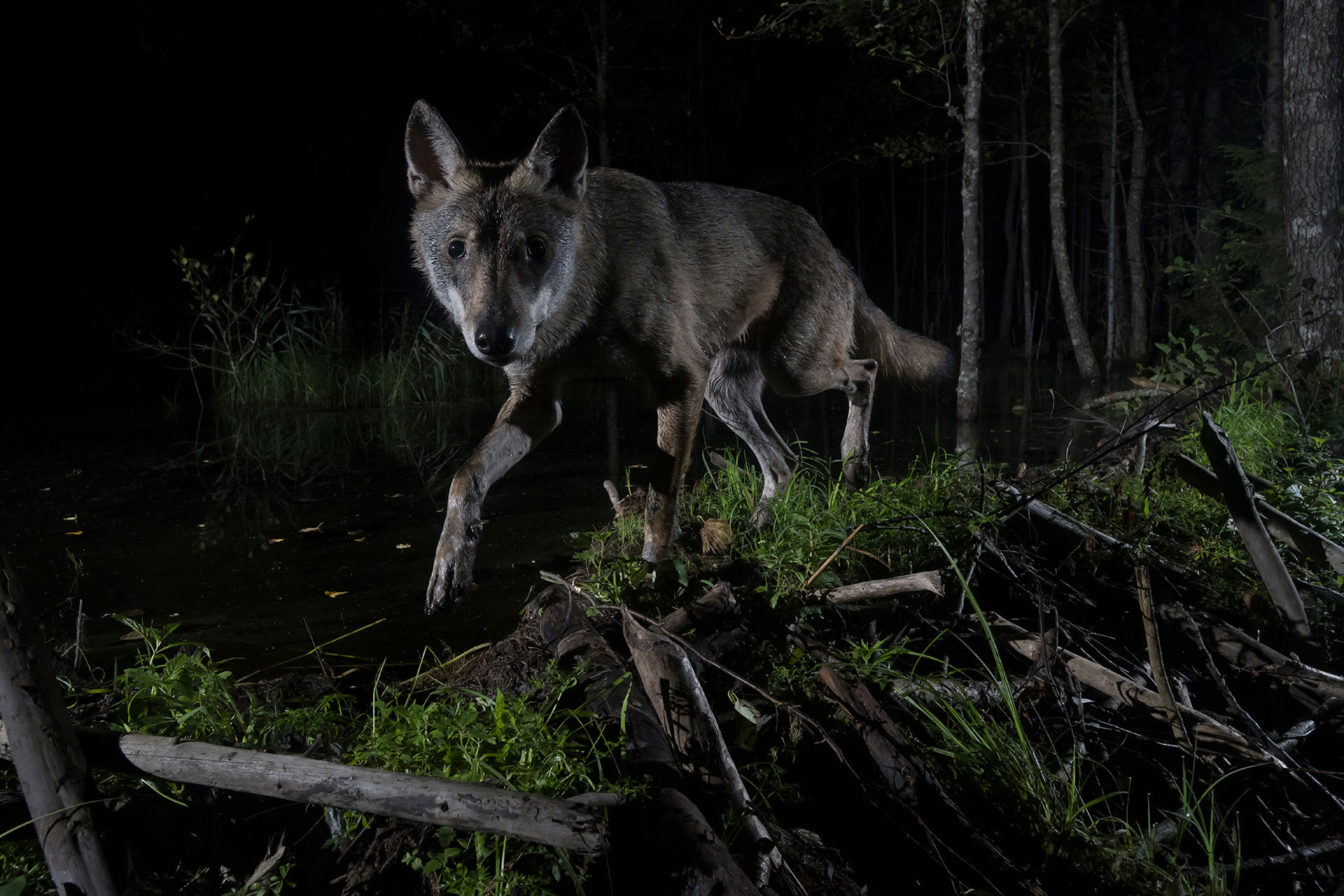
Young Wolf (Canis Lupus), Aare Udras
Ambition
“It is my ambition to document what I see, because I know things are changing and getting worse. Many things we still consider ‘normal’ and take for granted in nature these days, won’t be there for future generations to see, especially if we go on like we currently do.
For example, look at the felling of the old forests. The massive, unsustainable felling of old but beautiful forests is also, to a large extent, the result of the demand for alternative energy from Western Europe. The Estonian government and some businessmen have seized this financial opportunity with both hands. It’s part of the Greenwash that’s going on.
Many Estonians have been protesting against the felling of old forests for years, but the government paid little attention to this. Only since the beginning of this year have there been stricter restrictions on the felling of these forests, as environmental groups have approached the European Commission. But it won’t bring back the forests and biodiversity.
And the recent widespread desire to reduce imports of Russian gas, timber, etc. as a result of the terrible war that the Russian Federation has started in Ukraine, has once again fueled protests against restrictions on cutting forests. Thus, the survival of the primeval and ancient forests continues to be under pressure.
I am not going to start talking about water, its importance and the way we use water. Or the soil…
It seems like we have done everything we can to only be left with the worst possible choices…
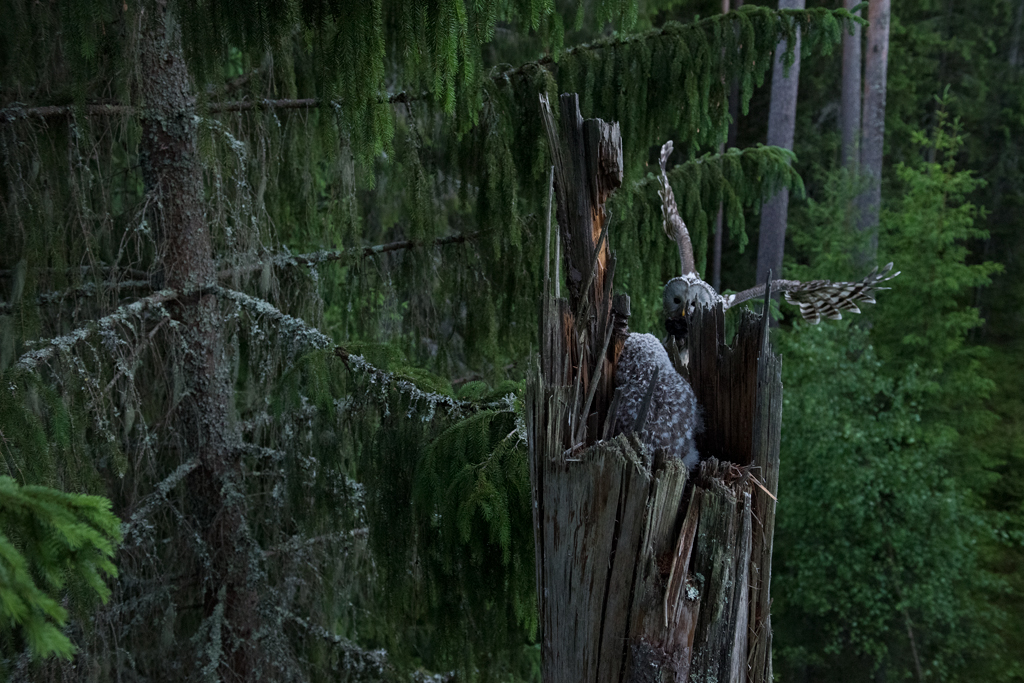
Ural owl (Strix uralensis), Aare Udras
That is why I would like to express the essence of nature with my photos. I want to take beautiful pictures to convince myself and viewers that there is still some of it left, and action must be taken to protect nature. To make them realize it’s still there, but it needs to be taken care of. To achieve this result, I try to show the positive side of nature, unlike many others showing where and how it went wrong. Usually, it is very difficult to take that beautiful picture.
But that being said, I am aware of the fact that I haven’t published much of my photos. The stack of photos on my hard drive increases with the years. I enjoy going through these old images. It brings back the feeling I had when I was out there, it gives me the chance to relive the experience of that moment. And it is a means to get my mind off my work.
A friend of mine once said to me: “It’s a waste of nature! You spend a lot of time there, you get gifts from nature in the form of those magical moments that you experience, but you just keep them to yourself!” In principle he is right, but it is a matter of priorities. For me it’s a hobby and I’d rather go to the woods than sit in front of my computer for hours, trying to get a publication worthy result. But of course this could be my lack of experience as I don’t practice enough.”
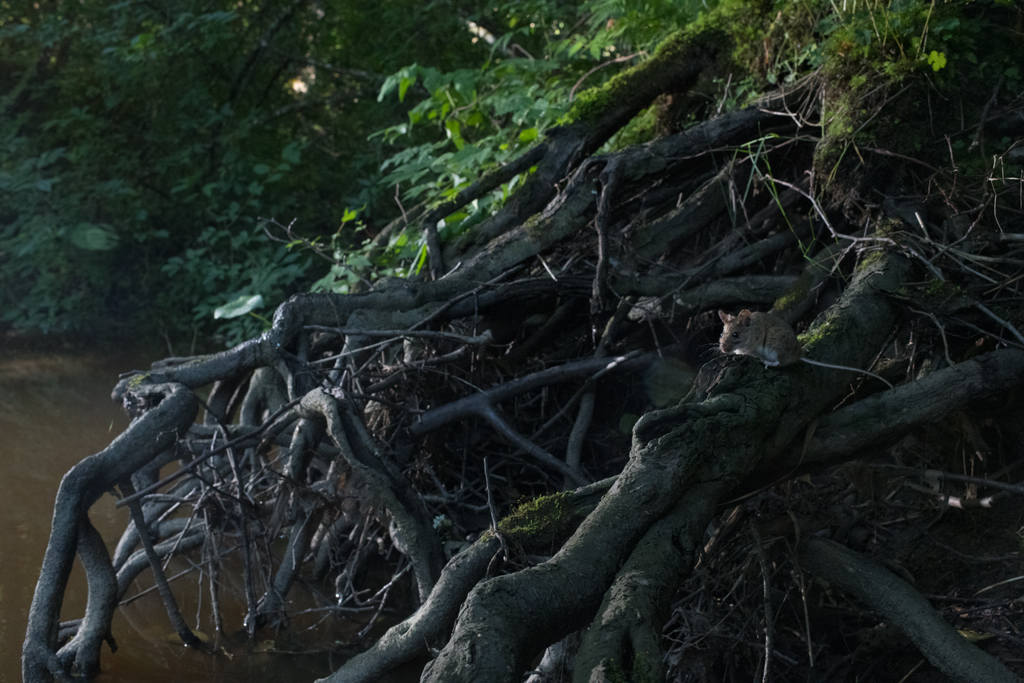
Yellow-necked mouse (Apodemus flavicollis), Aare Udras
Photography contest
“I do like photo competitions and will participate also in the 2022 edition of the Nature Photographer Of The Year contest. Most photo contests produce different winners every year, indicating that the level of wildlife photography is very high. So participating in photo competitions is the best chance to compare your level with other wildlife photographers.
By the way, with every competition I realize that I would like to see more work from the other participants. For example, I’d really like to see their hard drives, to gain more insight into their photography style, beyond just that one photo in the contest. I would be happy if the organizers of the competition would publish a list of the participants and their websites so that you can check out their websites for yourself. And contest organizers can easily create a slideshow and display it on their website. Let’s say – 1,000 selected photos for the final, and show a slideshow of the selected photos by category every month. I know I would really appreciate that!
To those who are in doubt about participating I would say: “Show your pics, it is always worth to send in pictures!”. But you have to select photos that have a meaning to yourself. This means you have to choose from the pile of photos that made up your initial selection. What do you prefer? Do you follow your emotions or your calculated chance to win. Do you go for interesting activity or well-balanced behavior? I would prefer emotion and interesting activity.”
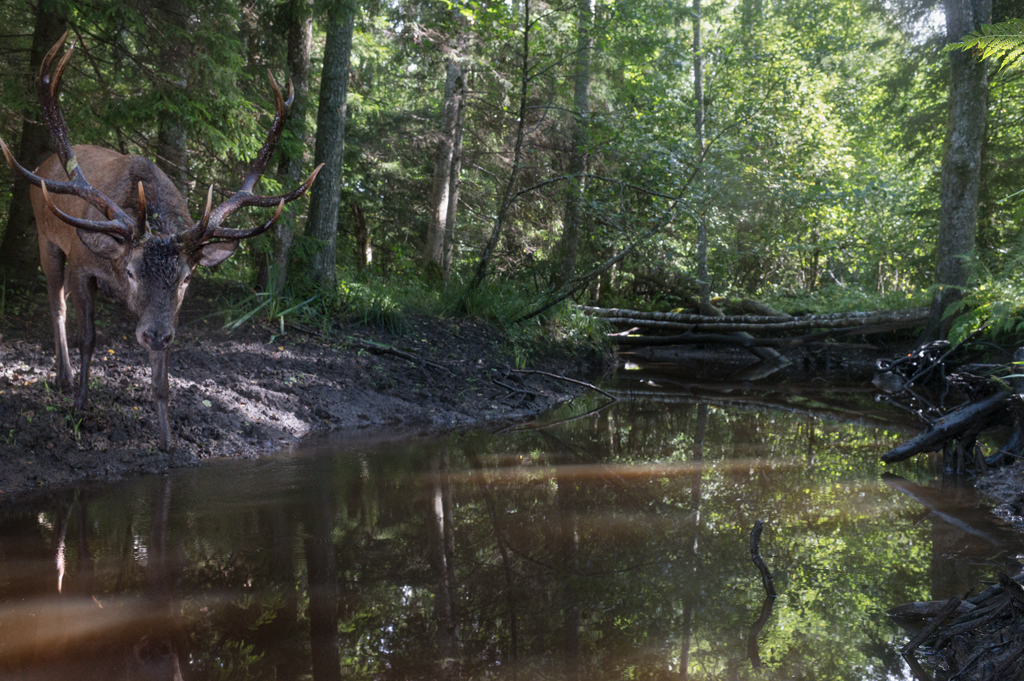
Red deer (Cervus elaphus), Aare Udras
Social Media
“I am not so much into Social Media. I do follow some photographers on my IG account, but that is about it. As I mentioned before, I do prefer to be outside and not in front of my computer if possible. I do have a website though. When I started this website, I thought I could show more work. I try to keep it alive, but sorry, it’s not my highest priority. Luckily this interview forces me more or less to get my website running again! Feel free to have a look sometimes.”
Covid-19 effects
“Due to the effects of the pandemic, I was less flexible to go out for the past two years. Schools were closed so the kids were more at home, life and all activities were somehow squeezed into the very narrow confines, which meant I definitely spent less time in nature.”
To finish the interview I asked Aare Udras the following question: “If you could ask another nature photographer one question, who would that be and which question would you ask?”
Aare Udras comes up with the following: “There are lots of photographers in the world. And hundreds of them are so very good, I could choose each one of them. They all have their own strengths. I think there is no best of the best. And each of these photographers I could ask: “Where does you creativity comes from, to come up with these pictures?”.”
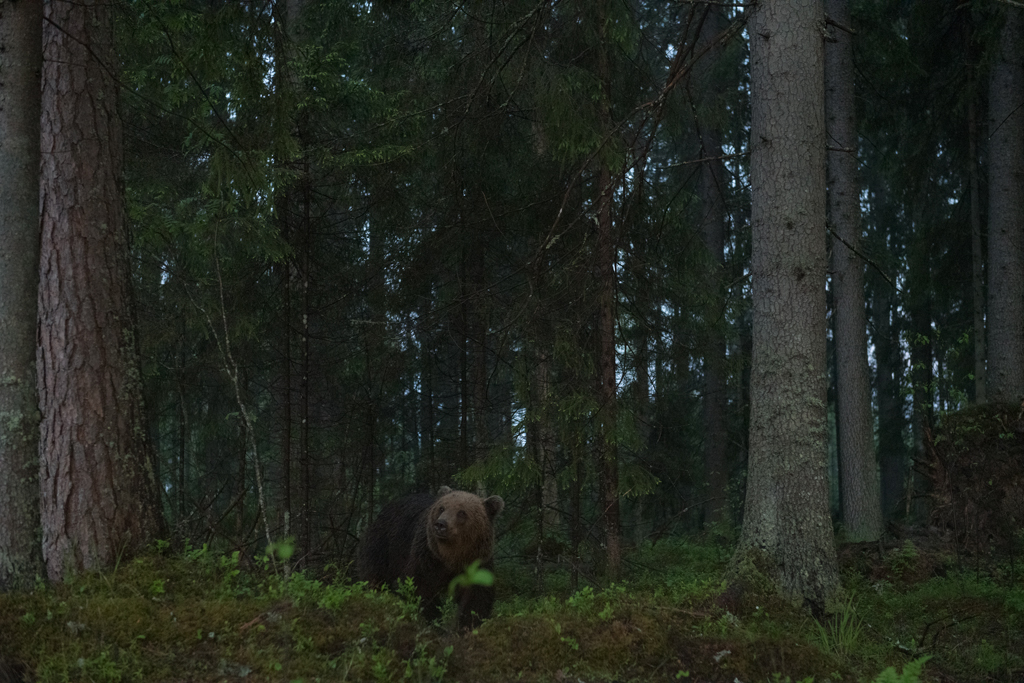
Brown bear (Ursus arctos), Aare Udras



